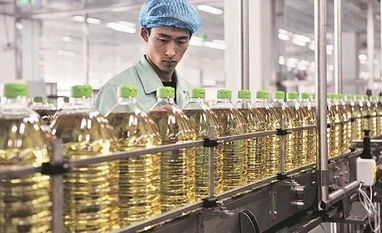Reduced purchases by the world's top importer of the oil, where it is widely used to fry foods such as samosas or bhajis, could pile more pressure on benchmark international futures that are already trading near their lowest in three years.
"Local prices moved up due to higher import tax and depreciation in the rupee. The price rise moderated demand for imports," said B V Mehta, executive director of the Solvent Extractors' Association of India (SEA).
India in March raised its import tax on refined palm oil to 54 per cent to support local farmers. That made palm cargoes less appealing than shipments of alternative edible oils such as soyoil, sunflower oil and canola oil - at least until import duties on those commodities were raised to 45 per cent in June.
For more than three months palm lost its competitiveness in Indian markets relative to other oils due to the higher duty, said Sandeep Bajoria, chief executive of the Sunvin Group, a Mumbai-based vegetable oil importer.
India buys palm oil from Indonesia and Malaysia, with its soyoil mainly imported from Argentina and Brazil. It purchases sunflower oil from Ukraine.
In the first nine months of the 2017-18 marketing year that started on November 1, India's palm oil imports fell 9.5 per cent to 6.1 million tonnes (mt), according to data compiled by SEA.
In the last three months of the year, imports could be around 1.8 mt, with an average of 600,000 tonnes per month, Mehta said. Last year, India imported 2.55 mt in the August to October period.
That would bring total 2017-18 palm imports to 7.9 mt, down 15 per cent on the year.
India now typically relies on imports for around 70 per cent of its edible oil consumption, up from 44 per cent in 2001-02.
Palm oil accounted for as much as 86 per cent of India's total edible oil imports a decade ago, but its share last year dropped to 62 per cent and could fall to a record-low of 56 per cent this year, according to SEA data.
Lower palm imports will drag down India's total edible oil purchases this year by 6 per cent to 14.2 mt, Mehta said.
"Earlier, imports used to rise by 700,000 to 800,000 tonnes per year. This year, we are witnessing a drop of the same amount," he said.
The country's edible oil consumption used to annually rise by over 3 per cent, but this year growth is less than a percent, said Govindbhai Patel, managing director of trading firm GG. Patel & Nikhil Research Company.
"Price rises, slower economic growth and other factors have slowed consumption growth," said Patel, who has been tracking the Indian edible oil industry for five decades.
To read the full story, Subscribe Now at just Rs 249 a month
Already a subscriber? Log in
Subscribe To BS Premium
₹249
Renews automatically
₹1699₹1999
Opt for auto renewal and save Rs. 300 Renews automatically
₹1999
What you get on BS Premium?
-
Unlock 30+ premium stories daily hand-picked by our editors, across devices on browser and app.
-
Pick your 5 favourite companies, get a daily email with all news updates on them.
Full access to our intuitive epaper - clip, save, share articles from any device; newspaper archives from 2006.
Preferential invites to Business Standard events.
Curated newsletters on markets, personal finance, policy & politics, start-ups, technology, and more.
Need More Information - write to us at assist@bsmail.in
)